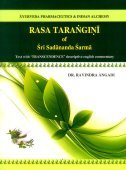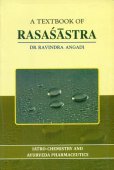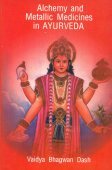Ashtasamskara, Aṣṭasaṃskāra, Ashta-samskara: 5 definitions
Introduction:
Ashtasamskara means something in Buddhism, Pali, Hinduism, Sanskrit. If you want to know the exact meaning, history, etymology or English translation of this term then check out the descriptions on this page. Add your comment or reference to a book if you want to contribute to this summary article.
The Sanskrit term Aṣṭasaṃskāra can be transliterated into English as Astasamskara or Ashtasamskara, using the IAST transliteration scheme (?).
In Hinduism
Ayurveda (science of life)
Rasashastra (Alchemy and Herbo-Mineral preparations)
Source: Wisdom Library: Rasa-śāstraAṣṭasamskāra (अष्टसम्स्कार) refers to the “eight steps of purification” used in Rasaśāstra to process and purify mercury (commonly termed rasa). There is also a list of eighteen saṃskāras extending this purification process and prepares for internal use, in order to transform the human body.
Source: Academia.edu: Ayurveda and Pharmaceutics (rasashastra)Aṣṭasamskāra of pārada (eight detoxification techniques for mercury) are mandatory before mercury is used in the pharmaceutical preparations.
- Svedana (fomentation),
- Mardana (grinding),
- Mūrchana (swooning),
- Utthāpana (elevating),
- Pātana (sublimation),
- Rodhana (coagulation),
- Niyamana (restraining),
- Dīpana or Saṃdīpana (stimulation)
These processes render mercury fit for internal use. These ritualistic methods of detoxification are believed to be ascribing magical effects to pārada. More than three weeks of time is needed to detoxify the mercury. So, the production of rasauṣadas was a time consuming and arduous process.
Source: CCRAS: Ayurvedic pharmacopoeia of India, Appendix IAṣṭasaṃskāra of Pārada was prescribed in Ayurvedic classics for purification and to increase the therapeutic activities.
The Aṣṭasaṃskāra are:
- Svedana
- Mardana
- Mūrchana
- Utthāpana
- Pātana (Ūrdhva, Adha and Tiryak)
- Rodhana / Bodhana
- Niyāmana
- Dīpana / Sandīpana
Aṣṭasaṃskāra (अष्टसंस्कार) refers to “eight basic processing steps of mercury”, and mentioned in the Rasaratnasamuccaya: a 13th century C.E. alchemical treatise, authored by Vāgbhaṭa, is a useful compilation related to preparation and properties of drugs of mineral and metallic origin.—Explanation of various units of measurements and pārada-aṣṭasaṃskāra (eight basic processing steps of mercury) are mentioned.

Āyurveda (आयुर्वेद, ayurveda) is a branch of Indian science dealing with medicine, herbalism, taxology, anatomy, surgery, alchemy and related topics. Traditional practice of Āyurveda in ancient India dates back to at least the first millenium BC. Literature is commonly written in Sanskrit using various poetic metres.
In Buddhism
General definition (in Buddhism)
Source: Wisdom Library: Dharma-samgrahaAṣṭasaṃskāra (अष्टसंस्कार) or simply Saṃskāra refers to the “eight practices for the abandoning of conditions” as defined in the Dharma-saṃgraha (section 119). The Dharma-samgraha (Dharmasangraha) is an extensive glossary of Buddhist technical terms in Sanskrit (e.g., aṣṭa-saṃskāra). The work is attributed to Nagarjuna who lived around the 2nd century A.D.
See also (Relevant definitions)
Partial matches: Ashta, Samskara.
Full-text: Patana, Rodhana, Niyamana, Murchana, Svedana, Dipana, Utthapana, Urdhvapatana, Tiryakpatana, Mardana, Adhahpatana, Samskara.
Relevant text
No search results for Ashtasamskara, Ashta-samskara, Aṣṭa-saṃskāra, Asta-samskara, Aṣṭasaṃskāra, Astasamskara, Aṣṭasamskāra; (plurals include: Ashtasamskaras, samskaras, saṃskāras, Aṣṭasaṃskāras, Astasamskaras, Aṣṭasamskāras) in any book or story.
Related products



